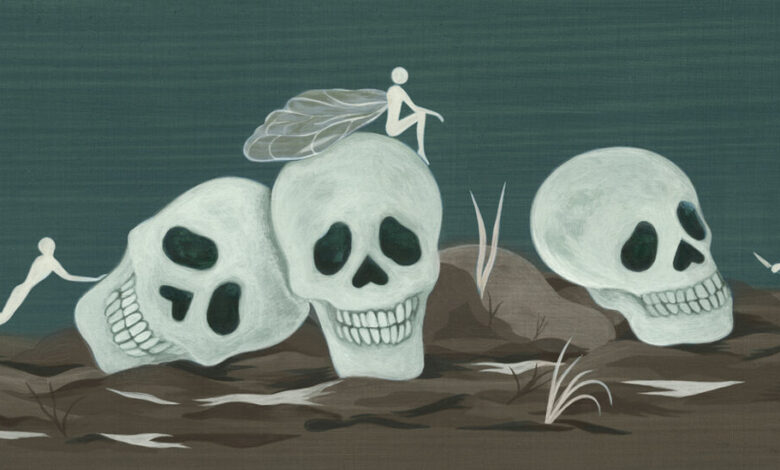The Heady Nihilism of Kotaro Isaka

THREE ASSASSINS, by Kotaro Isaka, translated by Sam Malissa
The killings that take place in “Three Assassins” — and there are many — are disarmingly mundane. Kotaro Isaka describes murder the way a doctor would a surgery: meticulous, but numbly pragmatic. He fixates on the pulpy, tangible procedure of death, the blood, spittle, clatter of knife point against bone. The novel’s central enigma, the Pusher, is defined by his method of pushing his victims in front of moving cars and then vanishing, making the scene look like an accident. But a method quickly becomes a routine, which becomes a straitjacket. And when your clients are a rogues’ gallery of conniving politicians and wealthy dirtbags, a corporate assassin isn’t far from a corporate automaton.
This deadening realization haunts Isaka’s three protagonists: the other two assassins, Cicada and the Whale, but also Suzuki, the novel’s everyman, whose quest to avenge his wife’s murder is stymied when the Pusher gets to her killer — a billionaire C.E.O.’s “idiot son” with a penchant for drunken hit-and-runs — first. Suzuki tails the Pusher, unaware that Cicada and the Whale are on his tail, too.
Suzuki, a bumbling former schoolteacher, makes for a perfect foil to these trained killers. But Isaka sends them all tumbling into the gutter of Tokyo’s disempowered criminal underworld. Cicada, who specializes in whole-family assassinations, lives under the thumb of a domineering handler. The Whale, who forces his targets to commit suicide, is tormented by the ghosts of his former victims. And Suzuki finds it increasingly difficult to justify his amoral actions in the name of a vengeance he can’t even achieve. All three men have their own reasons for searching for the Pusher, but what really eludes them is a sense of control over their own lives.
Some of these names may sound familiar to readers of Isaka’s “Bullet Train,” which follows another cast of hit men carrying out separate missions on one Shinkansen train, and takes place after the action of “Three Assassins.” With its cavalcade of characters and dense, claustrophobic setting, “Bullet Train” steams forward with the frenetic chaos of a Scooby-Doo chase sequence. By contrast, “Three Assassins” is a sparser, sourer thriller, its slow pursuit distending across Tokyo and leaving plenty of time for dread. On one job, the Whale — who reads “Crime and Punishment” over and over — asks himself: “Has anyone actually ever done anything for themselves? Can they even? As soon as they understand the impossibility of it, they want to die.”
In the delicate balancing act between this heady nihilism and his direct, propulsive plotting, Isaka occasionally fumbles. Moments that verge on existential epiphany (“people simply live, with no goal, no destination. They live like they’re dead”) or wry political critique (“fascism never looks like fascism”) are stunted by Isaka’s flat prose, and by Sam Malissa’s sometimes too-colloquial translation (it might be the only time you read a hired assassin address someone as “my dude”).
The novel is most successful when it marries its depressive elements with the hallucinatory. When Cicada meets the Whale, he is consumed by a sudden, preternatural melancholy, “saturated with black fluid” as a “gelatinous sorrow spreads through his chest, then his head.” Unable to remember anything before meeting his handler, Cicada asks aloud: “Do I even exist?” Does anyone in this eerie novel — littered with apparitions, made-up songs and films and professional actors posing as ordinary people? A surrealist fable disguised as a crime novel, “Three Assassins” feels like a fever dream that makes sense when you’re in it, but whose strange contours linger long after you wake up.
Ian Wang is a writer and critic whose work has appeared in The Baffler, Sight & Sound and Hyperallergic.
THREE ASSASSINS, by Kotaro Isaka, translated by Sam Malissa | 266 pp. | The Overlook Press | $27
